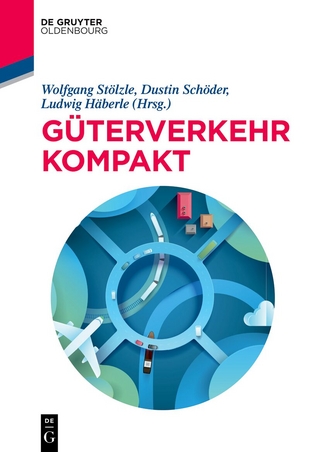
Managing Complexity and Creating Innovation through Design
Routledge (Verlag)
978-1-032-09330-7 (ISBN)
Coping with complexities is an everyday reality for private, public and third sectors that face intricate, overlapping, obscuring and ever-changing challenges. Developments in technology and systems of value creation are driving a new need to understand, facilitate and manage complexity.
The book proposes design and design research as a solution to respond to the complexities associated with the intensifying and rapid changes in societies, technological fields and environments. A four-step design process for managing complexities is introduced in the four parts of this book, spanning from design research in the field to practice-based contexts. This publication collates high-level research and the latest scholarship on this topic, while many of the case studies described herein draw on rich experiences and applications in practice.
The ways designers work to overcome complexities through design, and the methods and frameworks presented in the chapters, provide critical insights and form an important scholarly contribution in this subject area.
Satu Miettinen is a professor in service design at the University of Lapland and the dean of the Faculty of Art and Design. Her research interests span the themes of design methods in engaging with the Arctic region, service design methods for inclusion, the participatory development of services and socially responsible art and design methods. Melanie Sarantou is a post-doctorate researcher at the University of Lapland. She investigates how arts and narrative practices impact marginalised communities in various global locations. She is part of the Service Design Research Group, investigating marginality, empathy and improvisation.
Introduction: Managing complexity and creating innovation through design. (Satu Miettinen and Melanie Sarantou)
Part I: Managing complexities in research and in the field
Step 1: Understanding the context
Introduction
Digital storytelling: designing, developing and delivering with diverse communities. (Hilary Davis, Jenny Waycott and Max Schleser)
In and out of place: correspondence as a means to understand and redesign complexity. (Paul Wilson, Essi Kuure and Shilumbe Chivuno-Kuria)
Engaging ethics of care in socially responsible design and in research projects with Indigenous communities. (Mari Mäkiranta and Outi Ylitapio-Mäntylä)
Designing dialogues for complexities with marginalised youth: processes and tools. (Tang Tang, Shilumbe Chivuno-Kuria, Fabrizio Pierandrei and Silvia Remotti)
Part II: Managing complexities with users
Step 2: Creating insights
Introduction
User-centric design and field trial evaluation of technology in the wild. (Jonna Häkkilä and Keith Cheverst)
Designing with artificial intelligence: AI assistants as a gateway to complex service ecosystems. (Titta Jylkäs and Alexander Borek)
Touchscreens as the de facto interface to complex systems. (Ashley Colley, Niels Henze and Mohamed Khamis)
Green design as service design. (Mirja Kälviäinen)
Part III: Managing industrial, technological and digital complexities in the real world
Step 3: Creating concepts and innovation
Introduction
Transforming systems engineering design for accelerated industrial innovation. (Yang-Yang Zhao)
The significance of value-in-experience in the age of digitalisation. (Jana Kukk and Anu Leppiman)
Open data as new commons: design strategies to support the creation of communities and practices around a new shared resource. (Nicola Morelli, Amalia de Götzen and Luca Simeone)
Design in practice at the University of California, Berkeley. (Bernadette Geuy, Rachel Hollowgrass and Titta Jylkäs)
Part IV: Managing complexities for social change
Step 4: Initiating transformation
Introduction
New front to fight marginalisation: designing within the third sector. (Claudia Garduño García)
A new way to vote: Creating digital political awareness through the interactive referendum hub. (Hong Li and Xiaochuan Zhang)
From citizens to community: the complexity in the context and the transformation and the challenges of modernising Chilean services. (Kathy Mollenhauer and Mariluz Soto)
Index
| Erscheinungsdatum | 01.07.2021 |
|---|---|
| Zusatzinfo | 50 Illustrations, black and white |
| Verlagsort | London |
| Sprache | englisch |
| Maße | 156 x 234 mm |
| Gewicht | 335 g |
| Themenwelt | Kunst / Musik / Theater ► Design / Innenarchitektur / Mode |
| Wirtschaft ► Betriebswirtschaft / Management ► Logistik / Produktion | |
| Wirtschaft ► Betriebswirtschaft / Management ► Marketing / Vertrieb | |
| Wirtschaft ► Volkswirtschaftslehre | |
| ISBN-10 | 1-032-09330-7 / 1032093307 |
| ISBN-13 | 978-1-032-09330-7 / 9781032093307 |
| Zustand | Neuware |
| Haben Sie eine Frage zum Produkt? |
aus dem Bereich


